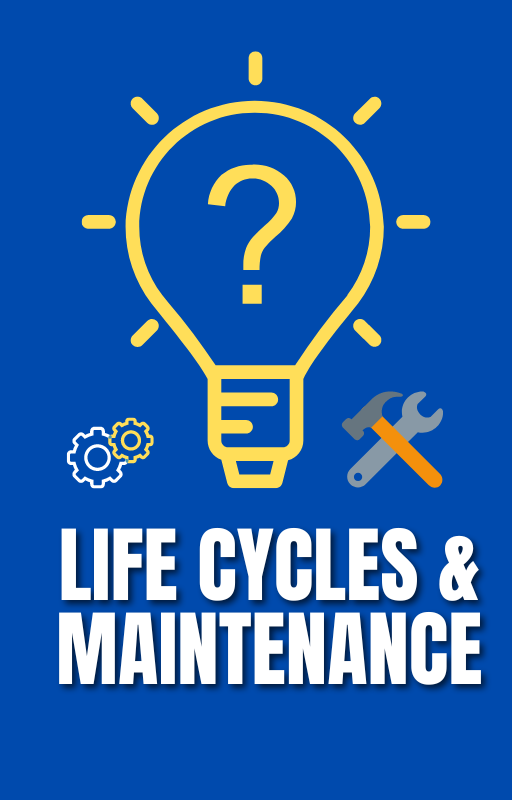Can a Self-Cleaning Oven Pose Health Risks?
Self-cleaning ovens are an amazing kitchen appliance that saves you time and effort. But you might be asking, “Can a self-cleaning oven kill you?” The short answer is no, it can’t directly harm you. But, if not used properly, it can create certain risks. This blog will discuss how to safely use a self-cleaning oven, and eliminate any hazards. Let’s dive into the details and put those fears to rest!
How Does a Self-Cleaning Oven Work?
Overview of self-cleaning oven process
Have you ever wondered how a self-cleaning oven magically cleans itself without the need for harsh chemicals or endless scrubbing? Let’s dive into the fascinating world of self-cleaning ovens and uncover the science behind their cleaning process.
Self-cleaning ovens are equipped with a special feature that uses high heat to remove food residues and grease without any manual intervention. This process is designed to save you time and effort while ensuring a hygienic cooking environment.
Temperature and duration of the self-cleaning cycle
During the self-cleaning cycle, your oven heats up to an extremely high temperature to burn off any leftover food particles and grease. The exact temperature may vary depending on the oven model, but it typically ranges between 800 to 900 degrees Fahrenheit (427 to 482 degrees Celsius). That’s hotter than a pizza oven!
The self-cleaning cycle typically lasts anywhere from two to six hours, depending on the level of cleaning required and the oven’s settings. It’s important to note that the oven door automatically locks during this process to prevent any accidents or injuries caused by the intense heat.
As the oven heats up, the accumulated food residues and grease inside the oven turn into ash. This ash can then be easily wiped away once the cleaning cycle is complete. The high temperatures effectively carbonize any stubborn stains, leaving your oven sparkling clean and ready for your next culinary adventure.
Remember, remove any large food debris or spills before initiating the self-cleaning cycle. This will ensure that the process is more effective and prevent any unpleasant odors or smoke caused by burning food particles.
Are There Any Safety Risks?
When it comes to self-cleaning ovens, convenience and efficiency are certainly appealing. However, it’s important to be aware of the potential safety risks that may arise during the self-cleaning process. In this section, we will discuss three key safety concerns: potential risks during the self-cleaning process, the release of harmful fumes and smoke, and burn injuries from high temperatures.
Potential Risks During the Self-Cleaning Process
Self-cleaning ovens use high temperatures to burn off food residues and grease, which can lead to potential risks if not handled with caution. One of the main concerns is the possibility of oven racks warping or discoloring during the self-cleaning cycle. To prevent this, it is recommended to remove the racks and clean them separately using conventional methods.
Another risk to be mindful of is the potential for damage to the oven’s interior. The extreme heat generated during the self-cleaning process may cause the oven’s insulation or seals to degrade over time. Regular maintenance and inspections are advisable to ensure the oven remains in good working condition and any potential issues are addressed promptly.
Release of Harmful Fumes and Smoke
During the self-cleaning process, it is not uncommon for ovens to emit fumes and smoke. These byproducts result from the burning off of food residues and can contain potentially harmful substances. Ensure proper ventilation in your kitchen while the self-cleaning cycle is in progress.
Opening windows, using exhaust fans, and ensuring adequate airflow can help minimize the concentration of fumes in your kitchen. It is also advisable to keep pets, children, and individuals with respiratory conditions out of the kitchen during the self-cleaning cycle to avoid any potential health risks.
Burn Injuries from High Temperatures
Self-cleaning ovens operate at extremely high temperatures to effectively remove stubborn stains and grease. As a result, there is a risk of burn injuries if proper precautions are not followed. It is vital to always read and follow the manufacturer’s instructions before initiating the self-cleaning process.
To prevent burns, avoid touching the oven’s interior or any hot surfaces during and immediately after the self-cleaning cycle. Allow sufficient time for the oven to cool down before attempting to clean or handle it. Using protective gloves and keeping a fire extinguisher handy are additional safety measures worth considering.
Can Self-Cleaning Ovens Emit Toxic Substances?
When it comes to household appliances, self-cleaning ovens are certainly a convenient and time-saving option. They promise to eliminate the need for harsh chemicals and scrubbing, making the daunting task of oven cleaning a breeze. However, there has been some concern about the potential emission of toxic substances during the self-cleaning process. In this section, we will delve deeper into this issue and explore whether self-cleaning ovens can indeed emit toxic substances.
Examination of Toxic Substances Released During the Cleaning Cycle
During the self-cleaning cycle, ovens heat up to very high temperatures, typically around 900 degrees Fahrenheit (482 degrees Celsius). This extreme heat is intended to burn off any food residue or grease inside the oven, turning them into ash. While this process is effective in cleaning the oven, it also has the potential to release certain substances that may be harmful to human health.
One of the main concerns is the emission of carbon monoxide gas, which can be produced when organic materials are subjected to high temperatures. Carbon monoxide is a colorless and odorless gas that, when inhaled in high concentrations, can lead to serious health issues, including headaches, dizziness, and even death.
Carbon Monoxide Emissions and Their Impact on Health
Carbon monoxide is a poisonous gas that interferes with the body’s ability to transport oxygen to vital organs. The symptoms of carbon monoxide poisoning can be subtle and easily mistaken for other common illnesses. Prolonged exposure to high levels of carbon monoxide can be particularly dangerous and even fatal.
While self-cleaning ovens have mechanisms in place to prevent excessive carbon monoxide emissions, it is still important to ensure proper ventilation during the cleaning cycle. Opening windows or turning on exhaust fans can help to dissipate any potentially harmful gases and reduce the risk of carbon monoxide buildup in your home.
Other Potential Toxic Fumes and Their Dangers
Apart from carbon monoxide, there may be other toxic fumes emitted during the self-cleaning process. The high temperatures can cause the breakdown of certain substances commonly found in ovens, such as non-stick coatings or leftover cleaning products. When these substances break down, they may release toxic chemicals into the air.
For example, polytetrafluoroethylene (PTFE), a component of some non-stick coatings, can emit toxic fumes when exposed to high temperatures. Inhaling these fumes can lead to a condition known as polymer fume fever, which causes flu-like symptoms such as fever, chills, and headache.
Furthermore, if oven racks or other oven accessories are left inside during the self-cleaning cycle, they may also release harmful fumes when exposed to high temperatures. It is essential to remove all removable parts and accessories before starting the self-cleaning process to prevent any potential risks.
Precautions to Take When Using a Self-Cleaning Oven
Ventilation and Proper Airflow
When using a self-cleaning oven, ensure proper ventilation and airflow in your kitchen. The self-cleaning process generates high temperatures, which can release fumes and smoke that may be harmful if inhaled in large quantities. To prevent this, open windows and doors to allow fresh air to circulate. You can also turn on the exhaust fan or use a portable fan to facilitate better airflow.
Safe Distance and Keeping Children and Pets Away
The extreme heat produced during the self-cleaning cycle poses a potential hazard to curious children and pets. It is essential to keep them at a safe distance from the oven during this process. Designate a “no-entry zone” and clearly communicate to everyone in your household the importance of staying away from the oven while it is self-cleaning. Consider using temporary barriers, such as baby gates, to restrict access and prevent accidents.
Using Non-Toxic Oven Cleaners as an Alternative
If you have concerns about the chemicals used in the self-cleaning process, there are non-toxic oven cleaners available as an alternative. These eco-friendly cleaners are formulated to effectively remove grease and grime from your oven without posing health risks. They are typically made with natural ingredients, such as citrus extracts or baking soda, which are safe for you, your family, and the environment. Look for non-toxic oven cleaners in your local supermarket or consider making your own using simple household ingredients.
What to Do in Case of Accidental Exposure
If you have accidentally been exposed to toxic fumes from a self-cleaning oven and are experiencing symptoms, it is important to take immediate action to ensure your safety. Here are the steps you should follow:
1. Recognize the Symptoms
The first step is to recognize the symptoms of toxic fume exposure. These symptoms may include dizziness, headache, nausea, difficulty breathing, coughing, or chest pain. If you experience any of these symptoms, don’t ignore them and take appropriate action.
2. Seek Medical Attention
In case of accidental exposure, it is essential to seek medical attention promptly. Even if your symptoms seem mild, it is better to err on the side of caution and consult a healthcare professional. They will be able to assess the severity of your exposure and provide appropriate guidance and treatment.
3. Contact Emergency Services
If you are experiencing severe symptoms or having trouble breathing, contact emergency services immediately. Toxic fume exposure can be dangerous, and it is better to have professionals evaluate the situation and provide necessary assistance.
Remember, toxic fumes can be harmful to your health, and it is always better to be safe than sorry. If you or someone else is exposed to these fumes, following the steps mentioned above can help minimize potential risks and ensure timely medical intervention.
Please note that this article is for informational purposes only and should not be considered medical advice. It is always recommended to consult with a healthcare professional in case of any health concerns or emergencies.
Conclusion
While it is highly unlikely that a self-cleaning oven can kill you, it is important to take necessary precautions to ensure safety. The high temperatures reached during the self-cleaning process can pose a risk if mishandled or if flammable materials are placed inside the oven.
Remember to always remove any excess food or grease before starting the self-cleaning cycle and keep the kitchen well-ventilated during the process. Avoid opening the oven door or attempting to touch the interior surfaces while it is in operation, as the extreme heat can cause burns.
While modern self-cleaning ovens are designed with safety features and undergo rigorous testing, it is important to exercise caution and common sense to prevent any accidents. By taking the necessary precautions, you can safely enjoy the convenience and benefits that a self-cleaning oven offers without any undue risks to your health or safety.







